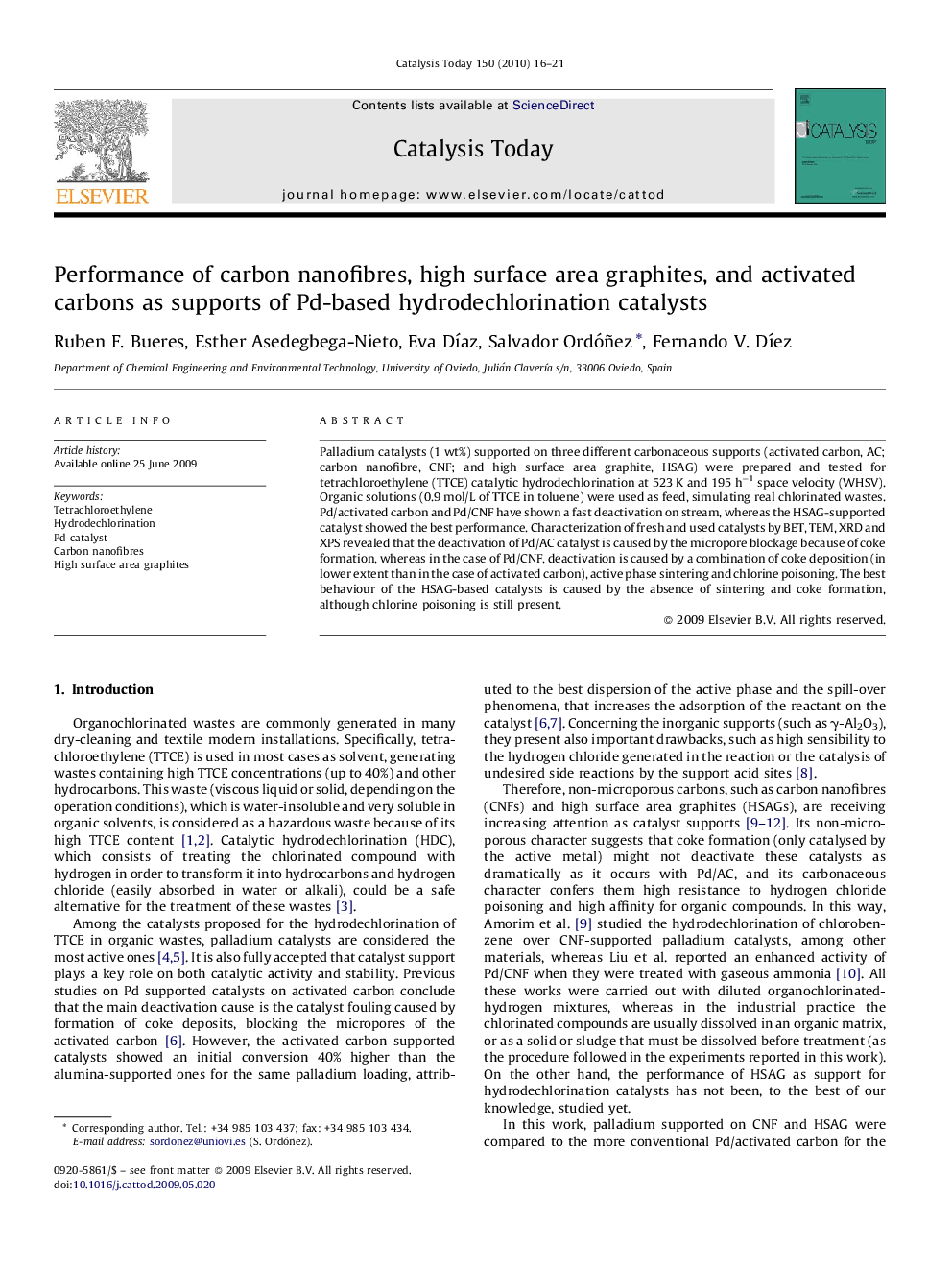| Article ID | Journal | Published Year | Pages | File Type |
|---|---|---|---|---|
| 56772 | Catalysis Today | 2010 | 6 Pages |
Palladium catalysts (1 wt%) supported on three different carbonaceous supports (activated carbon, AC; carbon nanofibre, CNF; and high surface area graphite, HSAG) were prepared and tested for tetrachloroethylene (TTCE) catalytic hydrodechlorination at 523 K and 195 h−1 space velocity (WHSV). Organic solutions (0.9 mol/L of TTCE in toluene) were used as feed, simulating real chlorinated wastes. Pd/activated carbon and Pd/CNF have shown a fast deactivation on stream, whereas the HSAG-supported catalyst showed the best performance. Characterization of fresh and used catalysts by BET, TEM, XRD and XPS revealed that the deactivation of Pd/AC catalyst is caused by the micropore blockage because of coke formation, whereas in the case of Pd/CNF, deactivation is caused by a combination of coke deposition (in lower extent than in the case of activated carbon), active phase sintering and chlorine poisoning. The best behaviour of the HSAG-based catalysts is caused by the absence of sintering and coke formation, although chlorine poisoning is still present.
